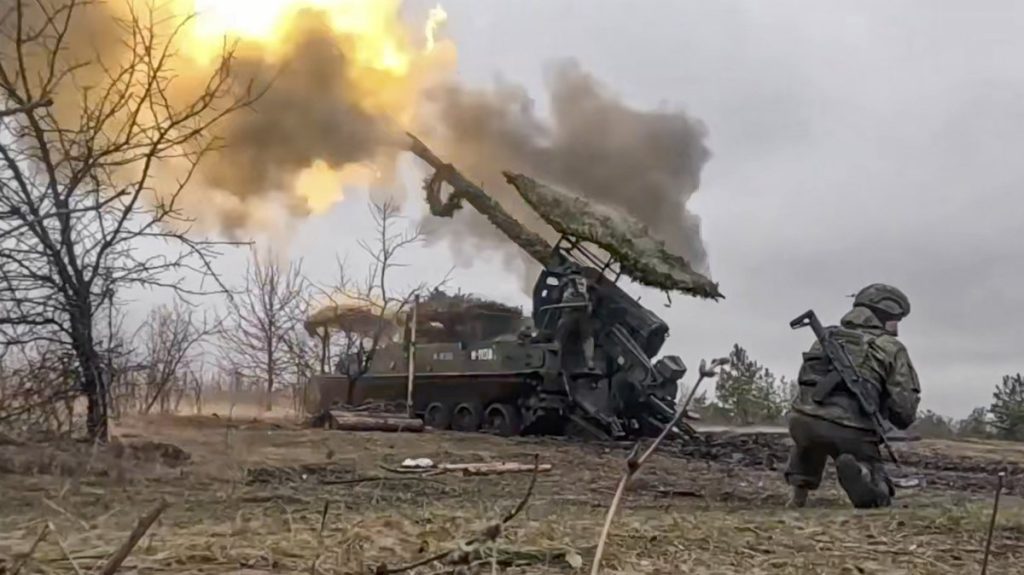In March, the office of the director of national intelligence published the “Annual Threat Assessment of the United States.” This report, which reflects the collective insights of the American intelligence community, highlighted four state actors just like last year. Those four states, namely China, Russia, Iran and North Korea, indicate the overall view of the most threatening actors acknowledged by the U.S. Besides, the order of the countries assessed in the report drops a hint about the magnitude of the threat that they pose, even if it may say otherwise. In this report, Russia maintains second place, which it has held for many years.
Looking at the strategic assessment, Russia’s search for status, especially its efforts to strengthen its power and influence in the other post-Soviet states against Western influence through the Ukraine war, is considered to have increased the risk of a NATO-Russia conflict. Moreover, it is stated that Russia’s geopolitical, economic and military orientations pose a threat to America’s existence, global interests and power, which may surprise many. Indeed, it seems to be an assessment that runs counter to the approach that the U.S., especially after President Donald Trump’s second term started, will not perceive Russia as a national security threat. Yet, the view on disrupting the tightening China-Russia-North Korea-Iran alliance (these are the four states forming the backbone of the annual threat assessment) by drawing Russia on board persists.
The reason why this view stands out, as it is also included in the intelligence report, is manifold. At the outset, Russia deepened its relations with China after strict Western sanctions, as it tried to reduce the impact of sanctions through Beijing and increased its integration with the Chinese market. Moreover, it has fundamentally increased military cooperation with North Korea and Iran. Moscow has also started to devote more time to alternative international organizations such as BRICS. In other words, Russia, which is being isolated, has pursued a way out as it turns into an alliance that is united against the West.
Concerning the report’s assessments, Russia’s experience in the Ukrainian field against Western weapons and intelligence is expected to pose a challenge to American defense planning in the long run. Notwithstanding, the Weapons of Mass Destruction (WMD) developed by Russia pose a threat to both the U.S. homeland security and its forces stationed in various regions. While the size and richness of Russia’s WMD capacity are emphasized, the tremendous damage potential to American soil through the land, air and sea-based delivery systems is stressed. The report emphasizes that Russia’s military capacity and defense industry investments will continue to threaten the security of the U.S., despite its major losses in the Ukrainian war. Hereby, the American Intelligence Community highlights the fact that Russia maintains its strategic deterrence.
Further fields of conflict are given as space, technology, cyber and malign influence activities. In this regard, Russian anti-satellite weapons are highlighted, along with their deficiencies in space-based architecture. On the Technology subject, Russian AI applications in the battlefield of Ukraine and its cooperation with China are emphasized, acknowledging its potential utilization against the U.S. or NATO in the future. Russian cyber competence is also listed as a threat vis-à-vis U.S. critical infrastructure. Russian strategy to deepen the cracks in the West is regarded as the main malign influence activities, mentioning its information operation efforts and tools.
Russia’s war in Ukraine requires a particular emphasis. Hereby, it is argued that the superiority in the Ukraine war passed to Russia last year. The Russian army has also gained momentum while utilizing its capacity advantage to outflank the Ukrainian military. It has made tactical but sure progress on multiple fronts despite the difficulties in recruiting. The report put emphasis on the increase in defense spending, specifically the production of artillery, long-range missiles, drones and glide bombs. It is calculated that the Russian army will maintain its firepower supremacy and that Ukraine’s resilience may be negatively affected in the long run. Ukraine, on the other hand, has stretched its limited resources in Kursk and is currently experiencing the impacts of the war of attrition more than Russia.
The continuation of the Ukraine war is considered a strategic risk by Washington. Because as the war continues, it is foreseen that it may spread to NATO-allied European countries and/or nuclear weapons may be fired. The prolongation of the war means economic loss for Russia along with the risk of conflict with the West, and it means weakening Kyiv’s hand as Western aid gets vague. The report evaluates the current circumstance as such: The warring parties prefer the risks that a prolonged war may cause an agreement or cease-fire that falls short of achieving their goals.
In short, Russia maintains its place in the annual threat assessment of the American intelligence community. The radical changes and transformations observed in the Trump administration’s discourse on Moscow have not been fully reflected in the institutional structure. In fact, it did not seem reasonable for Washington to suddenly eliminate the perception of a Russian threat and ignore the conflictual areas in the short run. As its 2025 threat assessment shows, Russia will continue to be a threat to U.S. power and influence as well as its homeland security. Likewise, Russia cannot be expected to completely trust the U.S. and let its guard down. In the medium and long run, regional changes, the war in Ukraine, and developments in the Arctic are to be the significant determinants. I would like to conclude by referring to the report, “China stands out as the actor most capable of threatening U.S. interests globally, though it is also more cautious than Russia, Iran and North Korea about risking its economic and diplomatic image in the world by being too aggressive and disruptive.”


